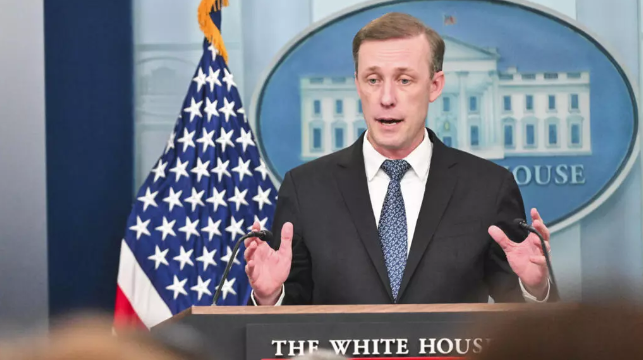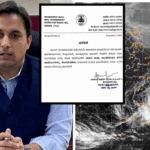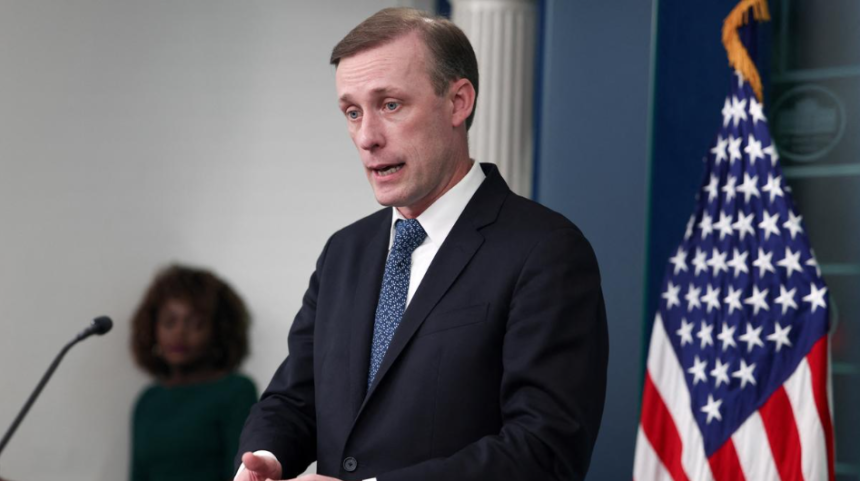U.S. Optimistic in what could be a major breakthrough in the protracted conflict between Israel and Gaza, the United States has expressed optimism that a deal to de-escalate the ongoing violence and address the humanitarian crisis in the region “can get done this week.” The statement, made by senior U.S. officials during press briefings in Washington, comes amid intense behind-the-scenes negotiations involving multiple parties, including Egypt, Qatar, and the United Nations.
The proposed deal aims to secure a ceasefire, provide desperately needed humanitarian aid to the people of Gaza, and create a framework for a longer-term resolution to the crisis. U.S. Secretary of State Antony Blinken and other top diplomats have been actively engaging with regional players, emphasizing the urgency of halting the bloodshed and addressing the worsening humanitarian situation in the densely populated enclave.
As international pressure mounts on all parties involved, the U.S. believes that diplomacy may finally yield results in what has been one of the most intractable conflicts in modern history. However, key obstacles remain, including disagreements over the terms of the ceasefire, conditions for humanitarian aid access, and long-standing issues such as the blockade on Gaza and Israel’s security concerns.
This article delves into the U.S. statement, the proposed deal’s key components, the stakes involved, and the hurdles that must be cleared to achieve lasting peace in the region.
The Current Situation in Gaza
The Gaza Strip has long been a flashpoint of conflict, but tensions have escalated in recent months following a new wave of violence between Hamas, the governing authority in Gaza, and Israel. The clashes have resulted in hundreds of casualties, widespread destruction of infrastructure, and a dire humanitarian crisis, with food, water, and medical supplies running dangerously low.
Humanitarian Catastrophe
According to reports by the United Nations and aid organizations, over 2 million residents in Gaza are facing worsening conditions as the fighting drags on. Electricity supplies have dwindled, hospitals are overwhelmed, and access to clean water is limited. Many civilians are trapped in the crossfire, with densely populated urban areas experiencing significant destruction from airstrikes and artillery shelling.
The World Health Organization (WHO) has declared the health system in Gaza to be at a breaking point, citing severe shortages of medicines, surgical supplies, U.S. Optimistic and staff. Children have been disproportionately affected, with UNICEF reporting thousands of injuries and displacements as families flee for safety.
The Proposed Deal: What’s on the Table?
The deal, which the U.S. describes as being within reach, involves a multifaceted approach that addresses both immediate and long-term concerns. Diplomatic sources have revealed some of the key elements being discussed as part of the proposed agreement:  For the more information click on this link
For the more information click on this link
1. Ceasefire
The primary goal is to negotiate a comprehensive ceasefire to bring a halt to the violence. Previous attempts at temporary ceasefires have often broken down due to mistrust between the parties, U.S. Optimistic making it critical to establish a framework that ensures the ceasefire is durable and enforceable.
2. Humanitarian Aid Access
One of the most urgent aspects of the proposed deal is ensuring the delivery of humanitarian aid to Gaza. Talks are underway to create “humanitarian corridors” that would allow trucks carrying food, medical supplies, and fuel to enter Gaza safely. Egypt, which shares a border with Gaza at the Rafah crossing, U.S. Optimistic is expected to play a central role in facilitating aid distribution.
The U.S. has emphasized the need for a swift and secure mechanism to ensure that aid reaches civilians rather than being intercepted or misused by armed groups.
3. Prisoner Exchange
A contentious part of the discussions involves the exchange of prisoners or hostages held by both sides. Reports suggest that Hamas has demanded the release of Palestinian prisoners in exchange for the release of Israeli detainees, U.S. Optimistic complicating the negotiations but potentially serving as a bargaining chip to advance broader peace efforts.
4. Long-Term Framework
While the immediate focus is on ending the violence and addressing humanitarian concerns, the U.S. has also pushed for incorporating a long-term framework aimed at reducing tensions and tackling root causes. This may include measures to ease the blockade on Gaza, U.S. Optimistic which has stifled the region’s economy and contributed to years of hardship, as well as steps to address Israeli security concerns related to rocket attacks and tunnel networks.
U.S. Role in the Negotiations
The Biden administration has stepped up its diplomatic efforts in recent weeks, dispatching high-ranking officials to the region and engaging key allies in a bid to mediate the conflict. U.S. Secretary of State Antony Blinken has been holding back-to-back discussions with counterparts in Israel, Egypt, and Qatar, U.S. Optimistic as well as the Palestinian Authority (PA), which governs the West Bank.
Pressure on Regional Stakeholders
The U.S. has urged regional players such as Egypt and Qatar—who have long-standing ties with Hamas and other Palestinian factions—to use their influence to push for a deal. Egypt, U.S. Optimistic in particular, has taken on the role of mediator by hosting several rounds of talks in Cairo and proposing humanitarian aid mechanisms.
At the same time, the U.S. is working closely with Israel to address its security concerns and ensure that any agreement does not embolden groups that threaten Israeli citizens. U.S. officials have underscored that achieving peace in Gaza requires balancing humanitarian objectives with Israel’s right to defend itself against armed attacks.
Congressional Challenges
Domestically, the Biden administration faces challenges from within the U.S. Congress. Some lawmakers have called for a tougher stance on Israel over what they describe as its excessive use of force, while others continue to support strong U.S.-Israel ties and stress the importance of combating terrorism.
Key Challenges to Finalizing the Deal
Despite U.S. optimism, multiple obstacles stand in the way of finalizing a deal. Analysts warn that the complexity of the conflict, combined with deep-seated mistrust between the parties, U.S. Optimistic poses significant hurdles.
1. Trust Deficit
Both Israel and Hamas have accused each other of violating previous ceasefires, complicating efforts to establish lasting trust. Israeli leaders argue that Hamas continues to pose an existential threat, U.S. Optimistic pointing to the group’s extensive arsenal of rockets and militant infrastructure. Meanwhile, Hamas accuses Israel of failing to address the underlying causes of the conflict, such as economic stagnation and the blockade.
2. Balancing Humanitarian Access and Security
Israel has expressed concerns that humanitarian aid corridors could inadvertently provide support to militant groups in Gaza. Ensuring that supplies reach civilians without falling into the hands of armed factions is a critical but difficult objective.
3. Political Dynamics
The political landscape on both sides adds further complexity to the negotiations. Israeli Prime Minister Benjamin Netanyahu faces domestic political pressure to take a hardline approach, U.S. Optimistic while Hamas faces scrutiny from within the Palestinian population regarding its leadership and strategy.
4. International Dimensions
The broader geopolitical environment also plays a role. While the U.S. and its allies are seeking to mediate, U.S. Optimistic countries such as Iran, which backs Hamas, may attempt to undermine the negotiations to further their own regional interests.
The Stakes for Gaza and Beyond
A resolution to the ongoing Gaza conflict carries significant stakes not only for the region but for the broader Middle East and global community.
1. Humanitarian Urgency
The people of Gaza are enduring one of the worst humanitarian crises in the region’s history. Failure to secure immediate aid could lead to further loss of life, prolonged suffering, U.S. Optimistic and long-term destabilization.
2. Regional Stability
The conflict in Gaza often acts as a lightning rod for tensions across the Middle East. A successful de-escalation could serve as a model for conflict resolution in other flashpoints and build momentum for broader peace initiatives.
3. U.S. Credibility
The Biden administration has invested significant political capital in brokering a deal. A successful agreement could reaffirm U.S. leadership in global diplomacy, U.S. Optimistic while failure could damage its credibility, particularly in an increasingly multipolar world.
Global Reactions to the U.S. Optimism
The U.S. statement about a deal being possible this week has drawn mixed reactions from the international community. While some see it as a positive sign of progress, U.S. Optimistic others remain cautious given the long history of failed agreements.  For the more information click on this link
For the more information click on this link
- United Nations: The UN welcomed the U.S. announcement and reiterated its commitment to supporting peace efforts in Gaza. UN Secretary-General António Guterres called for an “immediate cessation of hostilities” and emphasized the importance of addressing long-term grievances.
- European Union: The EU has voiced support for humanitarian aid access and a ceasefire but has stressed the need for a sustainable political solution. “This cannot just be a temporary pause in violence,” said an EU spokesperson. “We need lasting peace for all people in the region.”
- Arab States: Countries like Saudi Arabia and the UAE have backed U.S.-led efforts but have urged greater attention to resolving underlying issues such as the blockade on Gaza and the broader Palestinian-Israeli conflict.
Conclusion: A Hopeful Yet Precarious Path to Peace
The U.S.’s optimism about reaching a Gaza deal “this week” represents a pivotal moment in the ongoing conflict. If successful, such a deal could bring immediate relief to civilians and lay the groundwork for a more stable and peaceful future. However, with so many complex factors at play, U.S. Optimistic the path to an agreement is fraught with challenges.
As the region and the world watch with bated breath, one thing is clear: the stakes are high, and the consequences of failure could be catastrophic—not just for Gaza and Israel, U.S. Optimistic but for the fragile stability of the Middle East. Whether diplomacy prevails in the days ahead will shape the course of this decades-old conflict and test the resilience of international peacemaking. ALSO READ:- Trump would have been convicted if he wasn’t elected: U.S. Justice Department in special counsel report 2025





